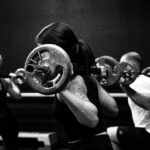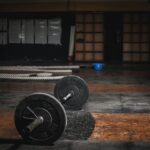Most fitness advice focuses on quick results—fat loss, muscle gain, or performance. But what if your real goal is to stay active, independent, and pain-free well into your 70s, 80s, or 90s? Training for longevity is about building a resilient body and mind that can thrive for decades—not just for the summer.
In this article, we’ll break down the principles of longevity-focused training, and how anyone at any age can start applying them today.
What Is Longevity Training?
Training for longevity is about movement quality, joint health, and balanced strength rather than appearance or max lifting numbers. The goal is functional fitness: the ability to move well, avoid injury, and perform everyday tasks with ease—today and 40 years from now.
This approach includes:
- Low-impact cardio for heart and metabolic health
- Strength training for bone density and muscle preservation
- Mobility and stability work to prevent falls and joint issues
- Stress-reducing practices like breathwork and mindful movement
- Strength Training: Your Anti-Aging Secret Weapon
After age 30, we naturally begin to lose muscle mass (sarcopenia) and bone density. Without resistance training, this accelerates with age. A longevity-focused program prioritizes:
- Full-body compound movements: squats, deadlifts, rows, and presses
- Bodyweight training: push-ups, lunges, planks
- Functional strength: farmer’s carries, step-ups, resistance bands
2–3 sessions per week is enough to maintain strength and protect against age-related decline.
- Mobility and Joint Health Matter More Than You Think
Healthy joints are essential for pain-free movement as we age. Mobility training is not just stretching—it’s about actively controlling your range of motion.
Add these to your weekly routine:
- Controlled articular rotations (CARs)
- Dynamic mobility drills for hips, shoulders, spine
- Movement patterns like crawling, rolling, or animal flow
- Yoga or Pilates (gentle or moderate-intensity)
This supports injury prevention and enhances overall movement quality.
- Low-Impact Cardio for Heart and Brain Health
You don’t need to run marathons to benefit from cardio. Low-impact, consistent aerobic work is a cornerstone of longevity:
- Brisk walking
- Cycling
- Rowing
- Swimming
- Hiking
Aim for 150 minutes per week of moderate-intensity activity, ideally spread out over 4–5 days.
Cardio not only improves cardiovascular endurance, but also supports cognitive function, mood regulation, and insulin sensitivity.
- Don’t Forget Balance and Coordination
Falls are a leading cause of injury in older adults. Train balance now to stay stable later:
- Single-leg movements (e.g., split squats, balance reaches)
- Stability ball exercises
- Barefoot training and proprioceptive drills
- Tai chi or coordination drills
Even 5–10 minutes a few times a week can dramatically improve balance.
- Recovery and Sleep: The Underrated Pillars
If you’re always sore or overtrained, you’re not building resilience—you’re breaking down. Longevity training honors recovery:
- Prioritize 7–9 hours of quality sleep
- Take active rest days with walking, stretching, or breathwork
- Use HRV or resting heart rate tracking to assess readiness
- Consider occasional “deload” weeks or lighter training blocks
Your recovery habits will determine whether you thrive or burn out long-term.
- Mental Resilience and Consistency
Longevity isn’t built in 30-day programs. It’s the result of daily consistency, mindset, and smart adjustments:
- Set long-term goals rooted in function, not appearance
- Track progress over months and years, not weeks
- Stay adaptable to your life stage, energy levels, and time availability
- Embrace plateaus—they’re part of the process
Being fit for life is a marathon, not a sprint.
Sample Weekly Longevity Training Plan
| Day | Focus |
|---|---|
| Monday | Full-body strength + mobility |
| Tuesday | Low-impact cardio (30 mins) |
| Wednesday | Active recovery (stretch + walk) |
| Thursday | Strength (core + balance focus) |
| Friday | Cardio + breathwork or yoga |
| Saturday | Play, hike, or functional movement |
| Sunday | Rest or light mobility |
Conclusion
Training for longevity is about more than reps and routines—it’s about building a body that serves you for life. Whether you’re 25 or 65, the choices you make now can add years to your active, independent future. Focus on strength, movement quality, heart health, and recovery—and stay consistent. Your future self will thank you.



